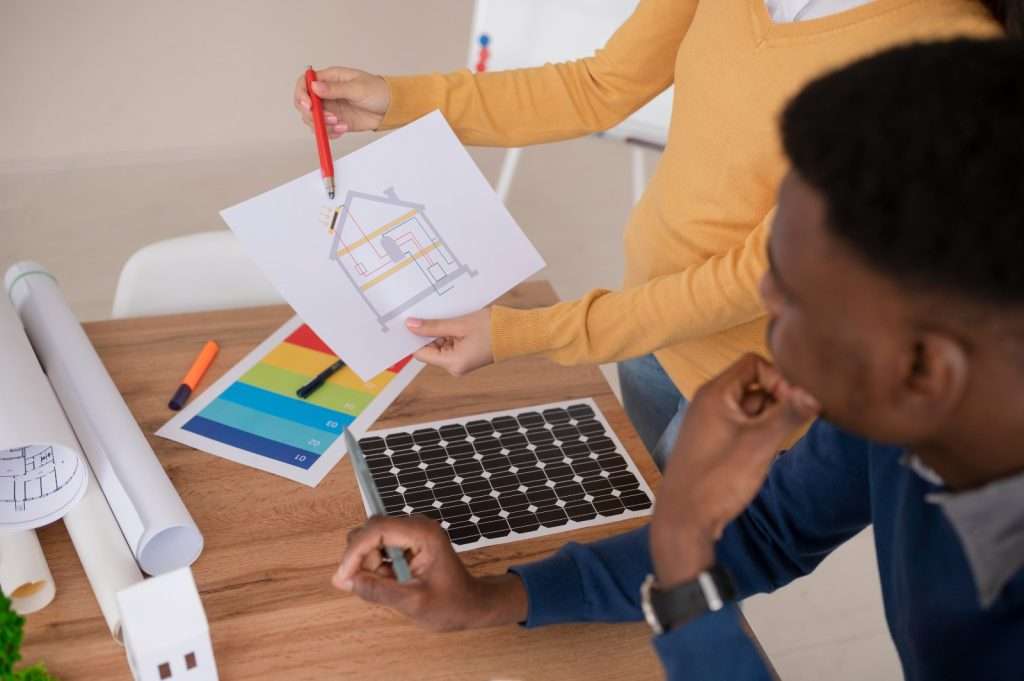Integrating solar panels into home battery storage systems has gained momentum in recent years as a promising solution for sustainable energy As the world moves towards renewable energy, homeowners are increasingly considering installing solar panels in combination with battery storage to enhance solar energy utilization and storage While it offers many advantages, such as mitigation and low carbon footprints, it also presents many challenges to be addressed In this article we explore the challenges of integrating solar panels into a home battery storage system and examine the barriers homeowners may face.
Understanding the Integration Process
Integrating solar panels with home battery storage systems involves many complex steps from initial design to installation and maintenance residential solar panel installer DC plays a vital role in this process, because of their duty to look after the sun energy equipment efficiency, design process and ensure seamless integration with battery storage. CAD design service are often used for detailed design and simulations, allowing installers to visualize the design and identify potential challenges before commissioning begins
The main challenge in integrating solar panels into a home battery storage system is system compatibility and interoperability. Different components such as solar panels, inverters and battery storage units come from different manufacturers and operate on different technologies Ensuring that these components are compatible is important for proper system operation. The DC installer of solar panels should select compatible components and arrange them so that they work together seamlessly. Additionally, software integration plays an important role in optimizing system performance and enabling advanced features such as remote monitoring and energy management.
Optimizing Performance and Efficiency
Once the system is installed, efficiency and efficiency are paramount to getting the most out of solar power and battery storage. The right size of the system is necessary to meet the energy demands of the home while reducing excess energy generation. Washington DC solar installations use sophisticated modeling tools to analyze energy consumption, solar radiation levels, and battery storage needed to determine the optimal system size CAD design services enable installers to create precise plans and designs, roof orientation, shading, and construction constraints Considering the factors involved.
Another key factor in system efficiency is energy efficiency. Battery storage systems allow homeowners to store excess solar energy generated during the day for use during periods of high demand or at night when solar panels are unavailable but energy efficiency prioritises energy using and solar panels, battery storage, grid power Smart algorithms and control strategies are essential to ensure smooth transitions in residential solar panel installer uses its expertise to install energy systems a further increasing self-service and reducing reliance on the grid.
Overcoming Financial and Regulatory Hurdles
While integrating solar panels into a home battery storage system offers long-term cost savings and environmental benefits, the upfront cost remains a significant barrier for many homeowners The initial investment required to install solar panels and battery storage can be substantial, although prices continue to fall these days for years Help can do that, giving homeowners greater access to solar energy. However, navigating the complexity of incentives and currency options requires careful planning and expertise.
Regulatory hurdles also pose challenges in installing solar panels in widely used battery storage facilities. Local building codes, zoning codes and utility policies vary widely across jurisdictions, affecting solar project feasibility and cost Residential solar installers should remain aware of DC code requirements and necessary permits and approvals are obtained to ensure compliance with local regulations. Washington DC solar installers play a critical role in developing good policies and regulations that help advance solar and battery storage in their communities.
Conclusion
In conclusion, while integrating solar panels into home battery storage holds great promise for sustainable energy use and reducing reliance on fossil fuels, it is not without its challenges. From ensuring alignment and synergy to productivity and efficiency, homeowners embarking on this journey must navigate the various challenges If with experienced residential solar installers establishing a DC and Washington DC solar installation partnership can help homeowners overcome these challenges and unlock both solar and battery power storage for their homes. With continued advances in technology and supporting infrastructure, solar, storage batteries will play an increasingly important role in the transition to a clean, renewable energy future.
